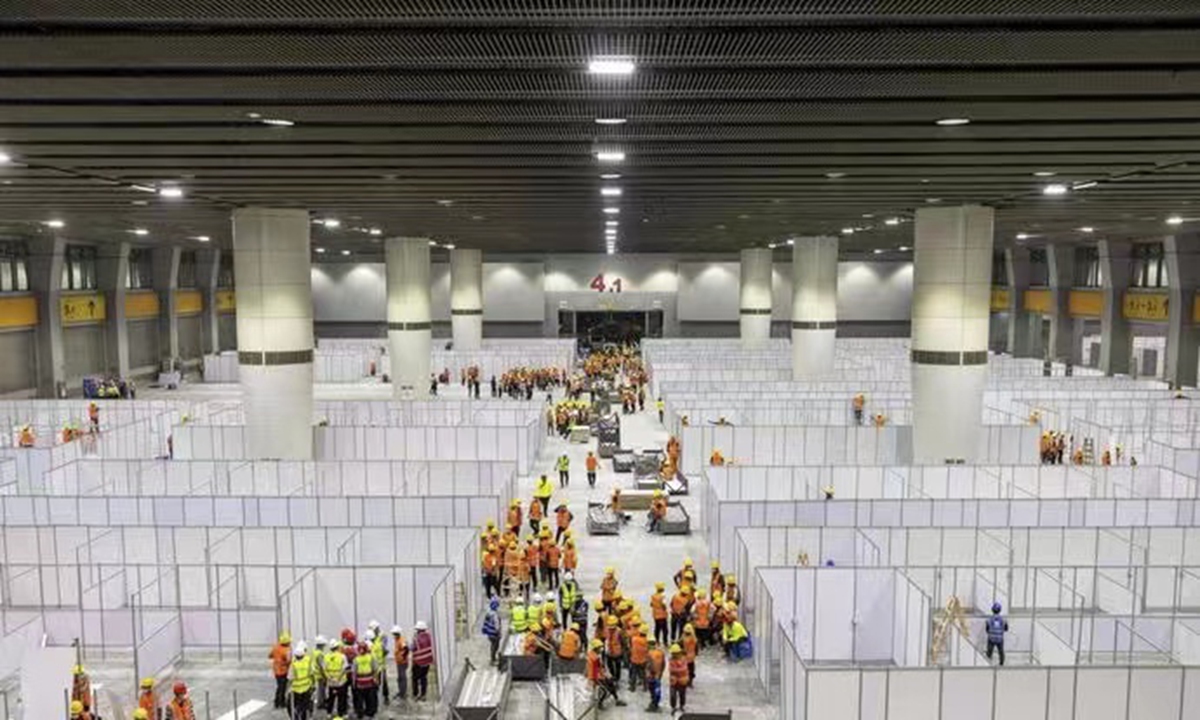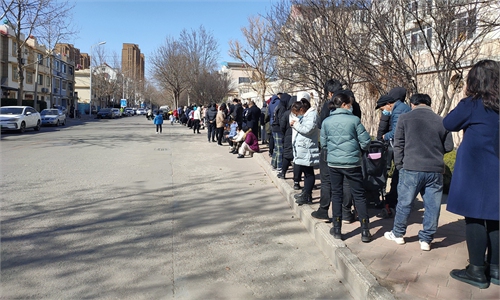
The construction of the makeshift hospital in the exhibition hall of the China Import and Export Fair in Pazhou district,south China's Guangdong Pronvince. Source:Southcn
China's top health authority announced on Tuesday that a total of 497,214 locally transmitted cases have been reported in the Chinese mainland since March, affecting all provinces except Xizang autonomous region.
The current epidemic situation appears to be stabilizing across the country, the national health authorities said at a press conference on Tuesday. The epidemic in Northeast China's Hebei and Liaoning, Central China's Anhui, East China's Jiangsu and Zhejiang, and South China's Fujian and Guangdong provinces has been brought under control.
However, cross-regional infections are still evident and the dynamic zero COVID policy still faces challenges, an official noted. There is a risk of community transmission in both Northeast China's Jilin Province and East China's Shanghai, as Jilin Province has a large base of infection and Shanghai's epidemic situation is still not completely controlled.
On Monday, Jilin Province reported 88 locally confirmed COVID-19 cases and 384 asymptomatic infections, while Shanghai reported 3,084 locally confirmed COVID-19 cases and 17,332 asymptomatic cases, according to the local health
The control of imported cases and the domestic resurgence, as well as the dynamic zero COVID policy, will remain the guiding principles for epidemic prevention and control in the future, the top health authority stated.
Wu Zunyou, chief epidemiologist of the Chinese Center for Disease Control and Prevention, pointed out at the press conference that the dynamic zero COVID policy refers to the detection and elimination of all COVID-19 cases, so as to prevent the transmission of the virus in the area of the outbreak as well as other regions.
The difference between the pursuit of the dynamic zero COVID policy and zero infection is that the country is not required to be free of COVID-19 infections at any one time, but for each outbreak that occurs, it is required to contain it in a relatively short period of time, Wu said.
In this regard, local governments will continue to be guided in carrying out epidemic prevention and control in a scientific, law-based and targeted manner, as well as maximizing the effectiveness of epidemic prevention and control at the lowest cost and in a way that is coordinated with economic and social development.
Global Times

